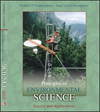 |  Principles of Environmental Science William P. Cunningham,
University of Minnesota
Mary Ann Cunningham,
Vassar College
Sustainability and Human Development
Learning ObjectivesAfter studying this chapter, you should be able to
I.explain the difference between neoclassical and ecological economics, and how each discipline views ecological processes and natural resources. |
 |  |  | II.distinguish between different types and categories of resources. |
 |  |  | III.discuss internal and external costs, market approaches to pollution control, and cost-benefit analysis. |
 |  |  | IV.analyze the role of business and some possible strategies for achieving future sustainability. |
 |  |  | V.recognize the push-and-pull factors that lead to urban growth. |
 |  |  | VI.appreciate how cities fail to be sustainable and how they might become more sustainable. |
 |  |  | VII.understand the causes and consequences of crowding and pollution in cities. |
 |  |  | VIII.see the connection between sustainable economic development, social justice, and the solution of urban problems. |
|



 2002 McGraw-Hill Higher Education
2002 McGraw-Hill Higher Education